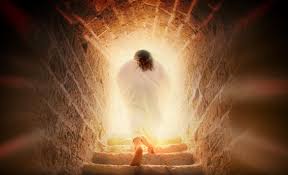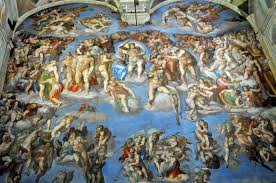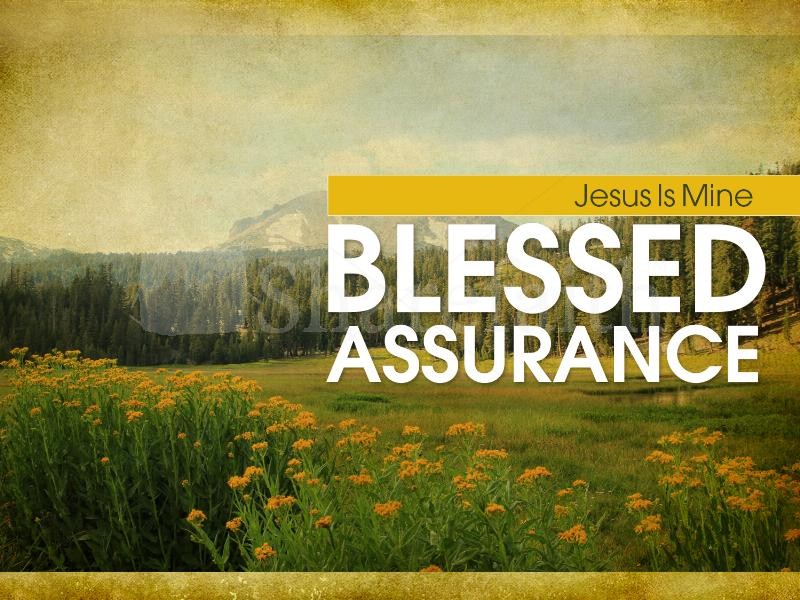 1 Corinthians 15 offers at least three important lessons concerning the Resurrection of Jesus and the future of His followers. These notes may be helpful to teachers of the Bible on this important topic…
1 Corinthians 15 offers at least three important lessons concerning the Resurrection of Jesus and the future of His followers. These notes may be helpful to teachers of the Bible on this important topic…
Lesson One: Our message is based on very specific reported facts of history that define the family of faith.
The Apostle offer Ten Facts concerning the Gospel of Jesus Christ (1 Corinthians 15:1-11) that caused the formation of a body of “believers”.
1 Corinthians 15:1 Now I make known to you, brethren, the gospel which I preached to you, which also you received, in which also you stand, 2 by which also you are saved, if you hold fast the word which I preached to you, unless you believed in vain. 15:3 For I delivered to you as of first importance what I also received, that Christ died for our sins according to the Scriptures, 4 and that He was buried, and that He was raised on the third day according to the Scriptures, 5 and that He appeared to Cephas, then to the twelve. 6 After that He appeared to more than five hundred brethren at one time, most of whom remain until now, but some have fallen asleep; 7 then He appeared to James, then to all the apostles; 8 and last of all, as to one untimely born, He appeared to me also. 9 For I am the least of the apostles, and not fit to be called an apostle, because I persecuted the church of God. 10 But by the grace of God I am what I am, and His grace toward me did not prove vain; but I labored even more than all of them, yet not I, but the grace of God with me. 11 Whether then [it was] I or they, so we preach and so you believed.
Look closely at the specifics from the verses above:
1. It was brought to them in content and ANNOUNCED (euangellion – cp.1). It is found in a good message that can be verbally communicated. The Gospel isn’t a harsh message that brings condemnation – but a liberating message of full payment. We aren’t sharing RULES with people – we are declaring their bondage ended!
2. The hearer had to CHOOSE to “take it along with them” (receive is the term “paralambano” – 1b). It was an active reception. The Gospel requires response and grasping. It is an active and deliberate process – not a passive one. No one gets to Heaven by accident, stumbling in the pearly gate. They must decide to receive the message.
3. The choice caused the recipient to “take their stand” or “FIX THEIR HOLD” on it (stand is the term “histemi” – 1b). It changed the recipient in future action. Having decided on the veracity of the message, they must cling to that message. The life perspective changed, they are not fickle – but cling to the Cross.
4. The choice to receive the announcement and fix hold on it SAVES the recipient (save is “sozo” – from to rescue or cure – v.2a). If sin is the sickness, the Gospel is the cure. One must understand that without the Gospel a man or woman is not simply “impaired” but LOST. In John 14:6 – “Jesus said to him, “I am the way, and the truth, and the life; no one comes to the Father but through Me.” The issue of SAVED and LOST is technically separation from the Father in Heaven.
5. The salvific effect occurs only for those who POSSESS the Gospel (the terms “hold fast” are a translation of “katecho” – to firmly bind to). This is not a casual acceptance of the concept – but a binding to the life of the recipient. A second emphasis of the BINDING nature of the recipient (after #3 above) should help to clarify that it must be a serious and real choice to be effective.
6. The Gospel was the HIGHEST PRIORITY message for the Apostle to bring to the Corinthian people (the term “protos” is translated “of first importance” – 3a). He taught them much over the one and one half years he was with them – but nothing was of higher importance in the public ministry.
7. Paul POSSESSED the Gospel before he shared it with them (the term “received” is again the term from verse one – “paralambano” – or choose). Though this isn’t essential, it shows that it was intentional on his part. The Gospel, because of its importance in HIS LIFE, was a burning message in the face of lost men and women.
8. The message includes DEFINED HISTORICAL FACTS: the “substitutional” nature of the literal death of Jesus for SIN (not political realities), the fact of His physical burial in a tomb and the literal understanding of the physical body’s Resurrection from the dead (15:5,6). A message without the components is a different message.
9. The facts were PROPHESIED from the Scriptures – the very Word of God (15:5). The narrative of Jesus’ ministry was drawn from the Prophets of old – and not some contrived story. In fact, without an understanding of the Hebrew Scriptures, one could not grasp the judicial terms of sin’s separation, and a sacrifice’s atoning nature.
10. The facts of the case were VERIFIED by many in the early community, and in Paul’s personal experience (15:8-11). Peter offered (2 Peter 1: “16 For we did not follow cleverly devised tales when we made known to you the power and coming of our Lord Jesus Christ, but we were eyewitnesses of His majesty. 17 For when He received honor and glory from God the Father, such an utterance as this was made to Him by the Majestic Glory, “This is My beloved Son with whom I am well-pleased”—18 and we ourselves heard this utterance made from heaven when we were with Him on the holy mountain. 19 [So] we have the prophetic word [made] more sure, to which you do well to pay attention as to a lamp shining in a dark place, until the day dawns and the morning star arises in your hearts. 20 But know this first of all, that no prophecy of Scripture is [a matter] of one’s own interpretation, 21 for no prophecy was ever made by an act of human will, but men moved by the Holy Spirit spoke from God.” Without predictive prophecy, the Gospel is just a story made by men. Because God made promises, and God keeps His promises, and the Bible contains His promises – we can see that Jesus fulfilled God’s promises. No Bible – no salvation.
Lesson Two: The Message hangs together or falls together!
To make the argument clearer, Paul argued that NO COMPONENT of the message of the Gospel can be extracted without collapsing the whole – because the veracity of the account hangs together. A truth shrouded in lies comes from no source you can trust for your eternal destiny:
1 Corinthians 15:12 Now if Christ is preached, that He has been raised from the dead, how do some among you say that there is no resurrection of the dead?
In the case of the Corinthians, it is clear that some were struggling with the notion of the life after death for the BODY. They may have believed in HEAVEN, but saw no reason to elevate the physical body to a place that required literal resurrection. Paul rejected this out of hand. Look at his reasoning:
• If there is no resurrection – the message we told you of Christ included a claim that was not true! 1 Corinthians 15:13 But if there is no resurrection of the dead, not even Christ has been raised;
• If there is no resurrection and the claim concerning Jesus was fabricated, you have believed an empty story of corrupt liars in the place of real faith! 1 Corinthians 15:14 and if Christ has not been raised, then our preaching is vain, your faith also is vain. 15 Moreover we are even found [to be] false witnesses of God, because we testified against God that He raised Christ, whom He did not raise, if in fact the dead are not raised.
• If there is no resurrection, you are not God’s people – but are still separated from Him! You are being persecuted for lies! 16 For if the dead are not raised, not even Christ has been raised; 17 and if Christ has not been raised, your faith is worthless; you are still in your sins. 18 Then those also who have fallen asleep in Christ have perished. 19 If we have hoped in Christ in this life only, we are of all men most to be pitied.
The point is that if the elements of the Gospel are not all present and true, then the message is not the good news at all! The message of the Bible is either TRUE or it is a terrible book of deception that has offered false hope to billions. One cannot simply argue that the text has “elements of truth” with occasional “misstatements” and “fabrications” without thereby implying the faith of Christ to be BOGUS.
The argument applies even more broadly! Consider for a moment how many other teachings hinge on the truth of this one. One such teaching is the place and work of Jesus now (John 14; Rev. 4 and 5). Martyrs like Stephen were NOT men of God if Christ is not Risen, but deceivers justly killed for their deception.
Lesson Three: The message of the Resurrection is also the beginning of a very PERSONAL promise of God to you!
The acceptance of God for the sacrifice of Jesus is found in the Resurrection. The FUTURE of the believer is also hooked to this truth as Paul made clear in the verses that close the chapter. Paul dispensed with the argument about the Raised Messiah, and simply showed the IMPLICATIONS OF THAT TRUTH TO BELIEVERS:
Messiah is the BEGINNING of a pattern. 1 Corinthians 15:20 But now Christ has been raised from the dead, the first fruits of those who are asleep. Christ is the first sample of what will become of the believer! He was the model; His resurrection an example of what God intends for men.
Look closely at the choice of the terminology of “ap-arche”: the term “first fruits”. This is a play on time in Lev. 23:9-14).
The earliest followers of Jesus were Jewish. Paul spread the message first in the synagogues, then (after being removed!) he opened his preaching to others. The “common knowledge” of the Jewish believer may not have been extremely deep, but every Jew had knowledge of the feasts of the Jews.
The feast that God commanded every Jew to celebrate on the Sunday following Passover was a “shadow” of Messiah’s resurrection (and eventually OUR resurrection!).
Lev. 23:4 These are the appointed times of the LORD, holy convocations which you shall proclaim at the times appointed for them. 5 In the first month, on the fourteenth day of the month at twilight is the LORD’S Passover. 6 Then on the fifteenth day of the same month there is the Feast of Unleavened Bread to the LORD; for seven days you shall eat unleavened bread. 7 On the first day you shall have a holy convocation; you shall not do any laborious work. 8 But for seven days you shall present an offering by fire to the LORD. On the seventh day is a holy convocation; you shall not do any laborious work.'” 9 Then the LORD spoke to Moses, saying, 10 “Speak to the sons of Israel and say to them, ‘When you enter the land which I am going to give to you and reap its harvest, then you shall bring in the sheaf of the first fruits of your harvest to the priest. 11 He shall wave the sheaf before the LORD for you to be accepted; on the day after the sabbath the priest shall wave it. 12 Now on the day when you wave the sheaf, you shall offer a male lamb one year old without defect for a burnt offering to the LORD. 13 Its grain offering shall then be two-tenths [of an ephah] of fine flour mixed with oil, an offering by fire to the LORD [for] a soothing aroma, with its drink offering, a fourth of a hin of wine. 14 Until this same day, until you have brought in the offering of your God, you shall eat neither bread nor roasted grain nor new growth. It is to be a perpetual statute throughout your generations in all your dwelling places. 15 You shall also count for yourselves from the day after the sabbath, from the day when you brought in the sheaf of the wave offering; there shall be seven complete sabbaths. 16 You shall count fifty days to the day after the seventh sabbath; then you shall present a new grain offering to the LORD.
You may recall that tucked between the command for Jews to celebrate Pesach (Passover) and Shavuot (Pentecost) was a “Feast of First Fruits”. This feast involved taking the un-ripened grain THE SUNDAY AFTER PASSOVER and bringing it to the priest at the Tabernacle (and later the Temple) to wave it before the Lord, make a lamb offering. The offering included a meal offering, a wine offering and special dietary commands for the day (Lev. 23:9-14). Since the earliest believers were Jews, the significance of this feast that they were commanded to keep “as a statute FOREVER throughout all their generations” (23:14) was not lost.
The most interesting thing about the Feast of First Fruits is the fact that it was NOT commanded to be on a counted date, as in the case of Passover – Lev. 23:5. Rather this is the only feast in the chapter to ALWAYS be celebrated on the same day of the week – Sunday! Remarkably, all of the other feasts are all based on a calculated DATE (Lev. 23:4,15,24,27,34).
The point of John 20:1 “On the first day of the week” was to REMIND EARLY FOLLOWERS OF THE SPECIAL DAY on which Messiah was raised. It was the Feast of First Fruits! This was the beginning of the “countdown” to Pentecost (Lev. 23:15), but it was much more. This was the day they celebrated the COMING OF A GREAT HARVEST! What a spiritual picture! This was the lesson of Paul to Corinth (1 Cor. 15:20-32), that the resurrection of Jesus was the CLEAR answer to the shadowy symbol of the waving of the sheaf commanded so long before!
In the ancient Hebrew mind (based on literary evidence) harvest and judgment are linked together concepts. One is usually expressed in the terms of the other. This is true in the terms of the prophets as they express God “treading out the grapes of wrath”, in the same way Jesus used it (Mt. 13 “reapers” that were angels). To the Hebrew mind, God does not judge man. Man grows his fruit, and God harvests that which man grows. What YOU sow, YOU reap! It is man’s own doing that causes his rotten fruit in the end. It is this same connection that evoked the link between the Jezreel Valley (the largest growth and harvest area in the country) and the “Valley of Armageddon” (Rev. 16:16- the valley of God’s judgment of the nations).
In the Feast of the First Fruits, God intended that Israel would understand the offering to be about things to come. He wanted them to make a special time to thank God for the harvest that was ahead. It was an incomplete stalk, but God would bring the whole harvest in. Herein is the lesson of Paul to Corinth. He argues:
15:21 For since by a man [came] death, by a man also [came] the resurrection of the dead. 22 For as in Adam all die, so also in Christ all will be made alive. 23 But each in his own order: Christ the first fruits, after that those who are Christ’s at His coming, 24 then [comes] the end, when He hands over the kingdom to the God and Father, when He has abolished all rule and all authority and power.
• As a man he conquered death, for the actions of a man brought death! (15:21-22). He took back in body what Adam lost in the garden!
• Jesus was raised as the first fruits offering (15:23), then the end comes, eventually destroying even death! (15:24-26)
The early church celebrated the Sunday of the First Fruits, and began early to understand that this was the great symbolic show that God would bring about our resurrection as sure as the spring harvest follows the winter rains!
After the Jewish significance of the feast was forgotten (sadly) the Council of Nicea (325 CE) struggled to bring conformity to the timing of the observance of a “Resurrection Feast”, but division in the Apostolic Fathers remained for hundreds of years. Had they simply understood the Hebrew Scriptures, they would have understood the significance of the Sunday after Passover Sabbath (John 20:1)!
Is the resurrection for everyone? If so, when and in what order? (15:22-28).
1 Corinthians 15:22 For as in Adam all die, so also in Christ all will be made alive. 23 But each in his own order: Christ the first fruits, after that those who are Christ’s at His coming, 24 then comes the end, when He hands over the kingdom to the God and Father, when He has abolished all rule and all authority and power. 25 For He must reign until He has put all His enemies under His feet. 26 The last enemy that will be abolished is death. 27 For HE HAS PUT ALL THINGS IN SUBJECTION UNDER HIS FEET. But when He says, “All things are put in subjection,” it is evident that He is excepted who put all things in subjection to Him. 28 When all things are subjected to Him, then the Son Himself also will be subjected to the One who subjected all things to Him, so that God may be all in all.
It IS for everyone (22).
The order is specific (23-28):
1. Jesus first.
2. Believers at Jesus’ return – 1 Thessalonians 4 or Daniel 12 both sides of the Tribulation – one for Church and one for earlier Jewish believers.
3. Unbelievers before Jesus’ total victory – Rev. 20:11-15
On Feb. 27, 1991, at the height of Desert Storm, that Ruth Dillow received a very sad message from the Pentagon. It stated that her son, Clayton Carpenter, Private 1st Class, had stepped on a mine in Kuwait & was dead. She later wrote, “I can’t begin to describe my grief & shock. It was almost more than I could bear. For 3 days I wept. For 3 days I expressed anger & loss. For 3 days people tried to comfort me, to no avail because the loss was too great.” But 3 days after she received that message, the telephone rang. The voice on the other end said, “Mom, it’s me. I’m alive.” Ruth Dillow said, “I couldn’t believe it at first. But then I recognized his voice, & he really was alive.” The message she had received was all a mistake!
She said, “I laughed, I cried, I felt like turning cartwheels, because my son whom I had thought was dead, was really alive. I’m sure none of you can even begin to understand how I felt.”
Perhaps not, but some who walked the pages of the N.T. would have understood how she felt because they experienced the same emotions themselves.
One day they watched their best friend & teacher being nailed to a cross. They witnessed His pain as He cried out, “I thirst!” & “My God, my God, why have You forsaken me?” They listened as finally He bowed His head & said, “It is finished!” & “Father, into thy hands I commit my spirit.” They watched as His body was taken from the cross & buried. All their hopes & dreams were buried with Him. Friday & all day Saturday they mourned, until finally, on “the first day of the week, early in the morning,” the scripture says, some women made their way along the path that led to His tomb, wondering who would roll away the stone for them.
But when they arrived, they found that the stone had already been rolled away. And an angel there told them, “You’re looking in the wrong place. You’re looking for Jesus among the dead. He is not dead. He is alive. He is risen, even as He said!” “He is Risen!” That is what we celebrate this morning. When all the evidence is in we’re convinced that Jesus is alive. He is risen from the dead, & what a difference His resurrection has made!
Dale Evans once said, “I spent most of my life searching for the pot of gold at the end of the rainbow. Then I finally found it at the foot of the cross.”


















